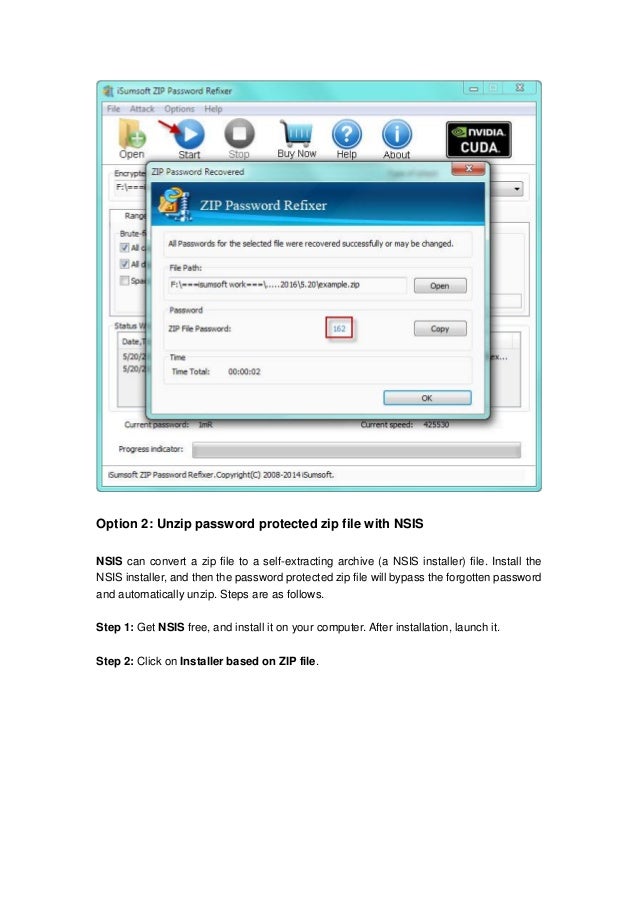Extract Files From Nullsoft Installer
Advertisement What do you do when you’ve created some new Windows software — anything from a Every Windows user eventually encounters problems that aren't easy to diagnose. Bookmark this article, so you'll have a list of tools handy to help you when it happens to you! To a Thanks to these awesome free game development software tools, a game that might've required one year can now be made in six months or faster, sometimes without any code! — and you want to share it with the world?

Name of the installer. OutFile 'HelloWorld.exe' # Name of the installer's file. Function.onInit # Function that will be executed on installer's start up. MessageBox MB_OK MB_ICONINFORMATION 'Hello world!' # Show a message that says 'Hello world!' Quit # Close the installer because this is a simple 'Hello world!' Important Notice When you uninstall a software, MyUninstaller utility is not directly responsible to the uninstall process. MyUninstaller simply run the uninstall. Universal Extractor is a program designed to decompress and extract files from any type of archive or installer, such as ZIP or RAR files, self-extracting EXE files. General purpose Windows archive utility; used to extract.7z, 7-Zip SFX.exe,.bz2,.cab,.chm,.cpio,.deb,.gz,.iso,.lha,.lz,.lzh, NSIS installer.exe,.rpm,.tar,.xz,. Self-extracting rars/zips/whatever can be extracted using the proper command line parameters. Inno installers can be unpacked with innounp. NSIS installers can be unpacked using 7z. But what you want is probably to run the installer silently. Find out whether the 3rd party installer supports silent.
Well, you could compress the files into a single ZIP file and distribute that. Or you can be fancy and create an installer EXE instead. We’ll be covering three different methods in this post: a self-extracting package, a simple installer using the built-in IExpress, and an advanced installer using the customizable Inno Setup. Quick Method: Using 7-Zip You probably already use 7-Zip for Were you ever faced with a.rar file and wondered how to open it? Fortunately, managing ZIP files and other compressed archives is simple with the right tools.

Here is what you need to know., and you probably already know that 7-Zip can create archive files, but did you know that you can also use it to create an EXE file that acts like an installer? Cal 22 Sailboat Manual Bilge. It’s called an SFX archive (“self-extracting”) and works by compressing all of your end files together, then embedding a special EXE file inside the archive that knows how to extract everything. In other words, the recipient can extract the SFX archive (which appears as an EXE file itself), even if they don’t have the right software, which can happen with formats like 7Z, RAR, TAR, and ZIP.
How to create your own SFX archive with 7-Zip: • Prepare all of your files and directories within a single main directory and name the directory whatever you wish. • Right-click on the directory and select 7-Zip >Add to archive • Under Options, enable Create SFX Archive and select the following settings >Archive Format: 7z >Compression Level: Normal >Compression Method: LZMA2 >Dictionary Size: 16 MB >Word Size: 32 >Solid Block Size: 2 GB • Click OK. Note that SFX archives aren’t true installer files. They don’t place the extracted files into a designated target directory. They don’t modify the Windows Registry. They don’t create install logs and they don’t show up as “installed software” in the Uninstall app.
They are literally archive files dressed up as EXE files. Download — (Free) Easy Method: Using IExpress IExpress is a utility that comes bundled with versions of Windows starting with Windows XP and beyond. The utility comes with a front-end graphical interface (called IExpress Wizard), but you can also create installer files using hand-scripted Self Extraction Directive (SED) files. We recommend the Wizard. Like 7-Zip above, this method creates a self-extracting archive but with two major differences: one, the end user will proceed through a multi-page Installation Wizard, and two, the end user can specify the target directory to where the tool will extract the files. How to create your own installer EXE using IExpress: • Open the Run prompt ( Windows key + R) and type iexpress.exe to launch the IExpress Wizard.
• Select Create new Self Extraction Directive file and click Next. • Select Extract files only and click Next. • For the package title, the name of your app is a safe choice. • For the confirmation prompt, choose No prompt or Prompt user with.
It doesn’t matter either way. For the sake of the end user, including one is always a safe choice. • For the license agreement, Display a license if you want the end user to agree to some kind of End User License Agreement (EULA). If not, it’s fine to select Do not display a license. • Add all the files you want to see installed by clicking Add, browsing to where the files are, and selecting them all.



